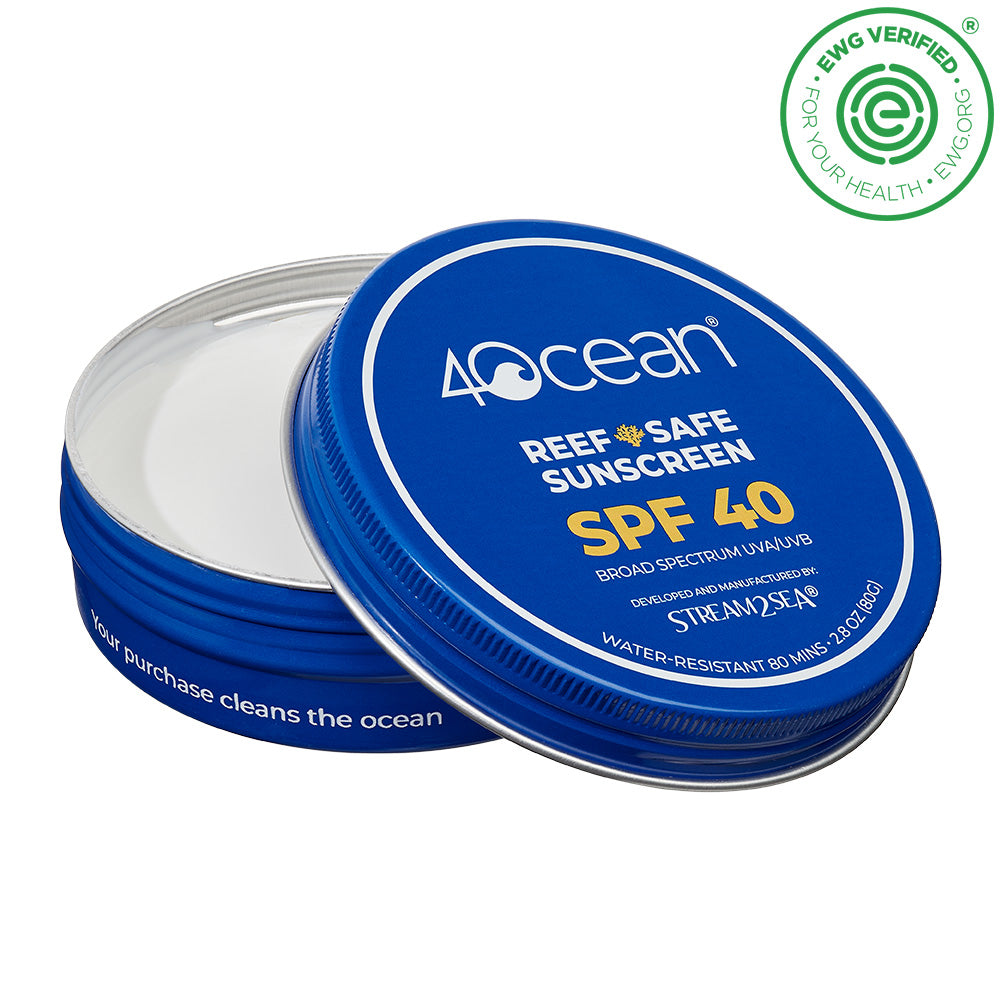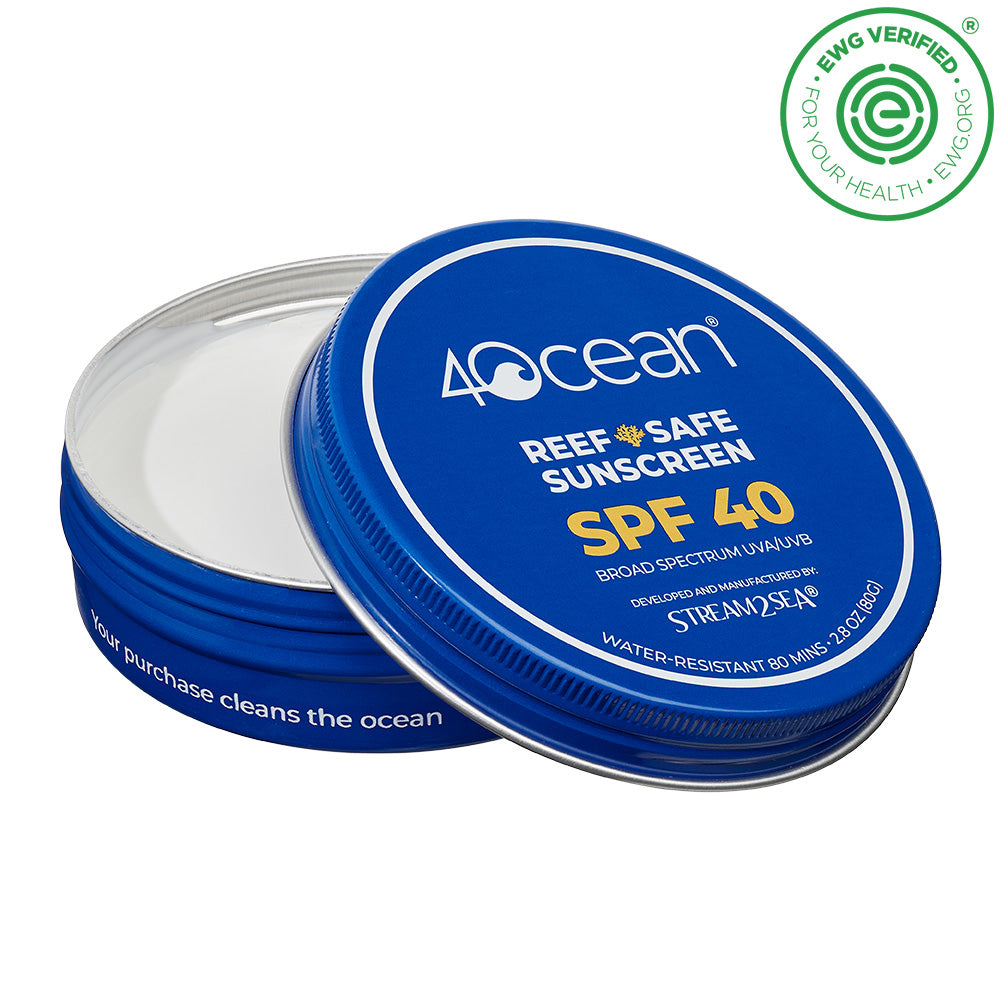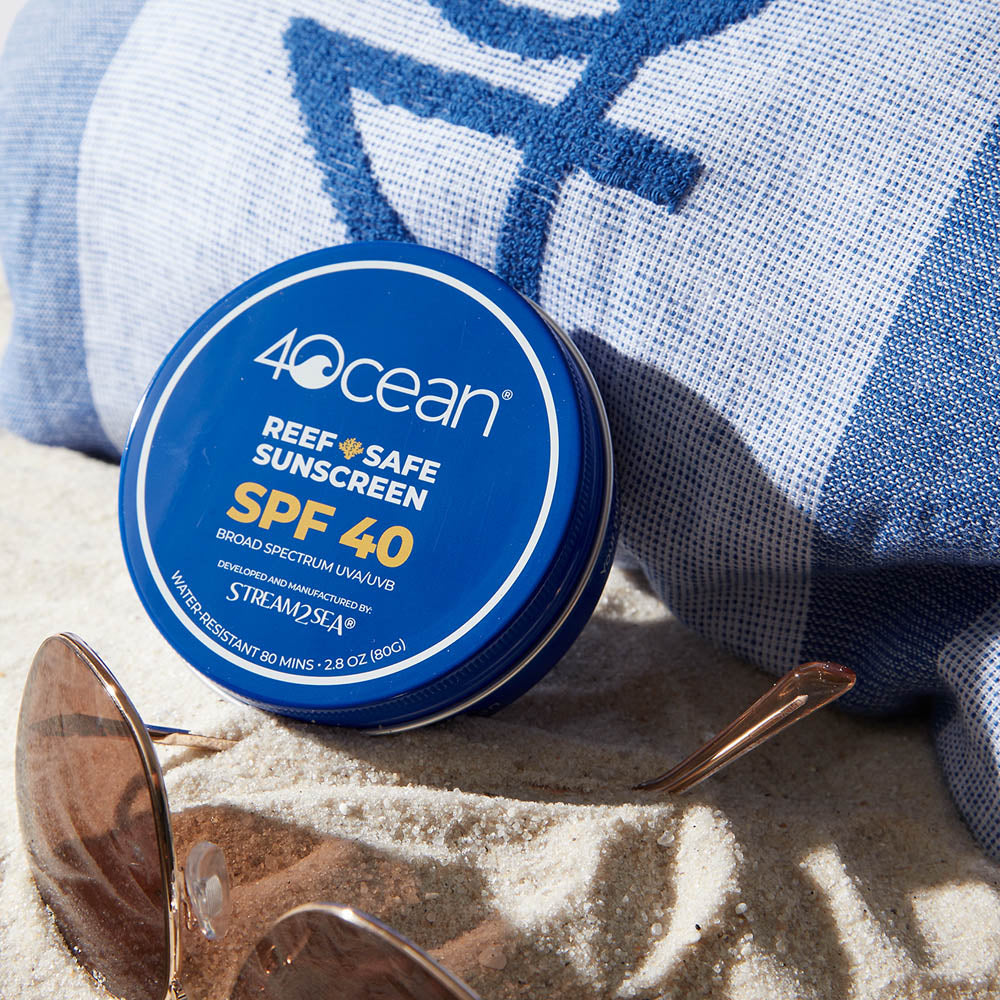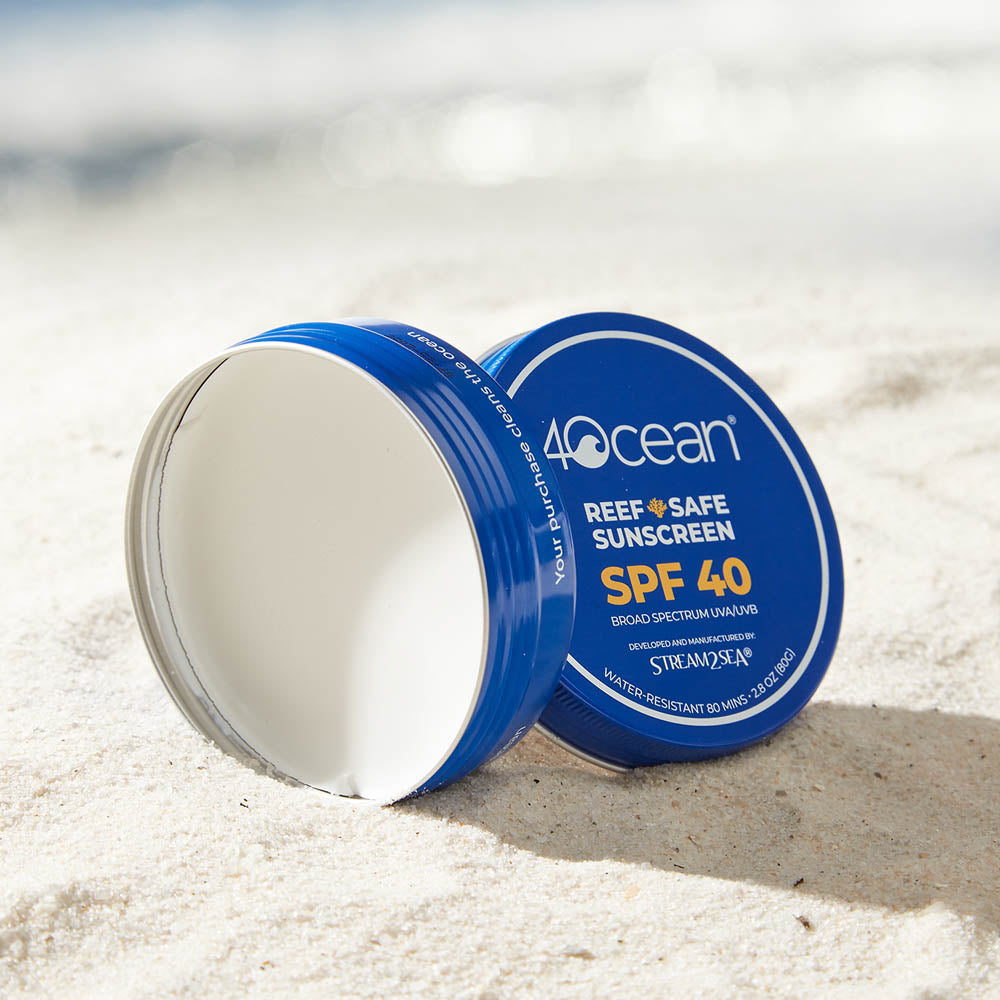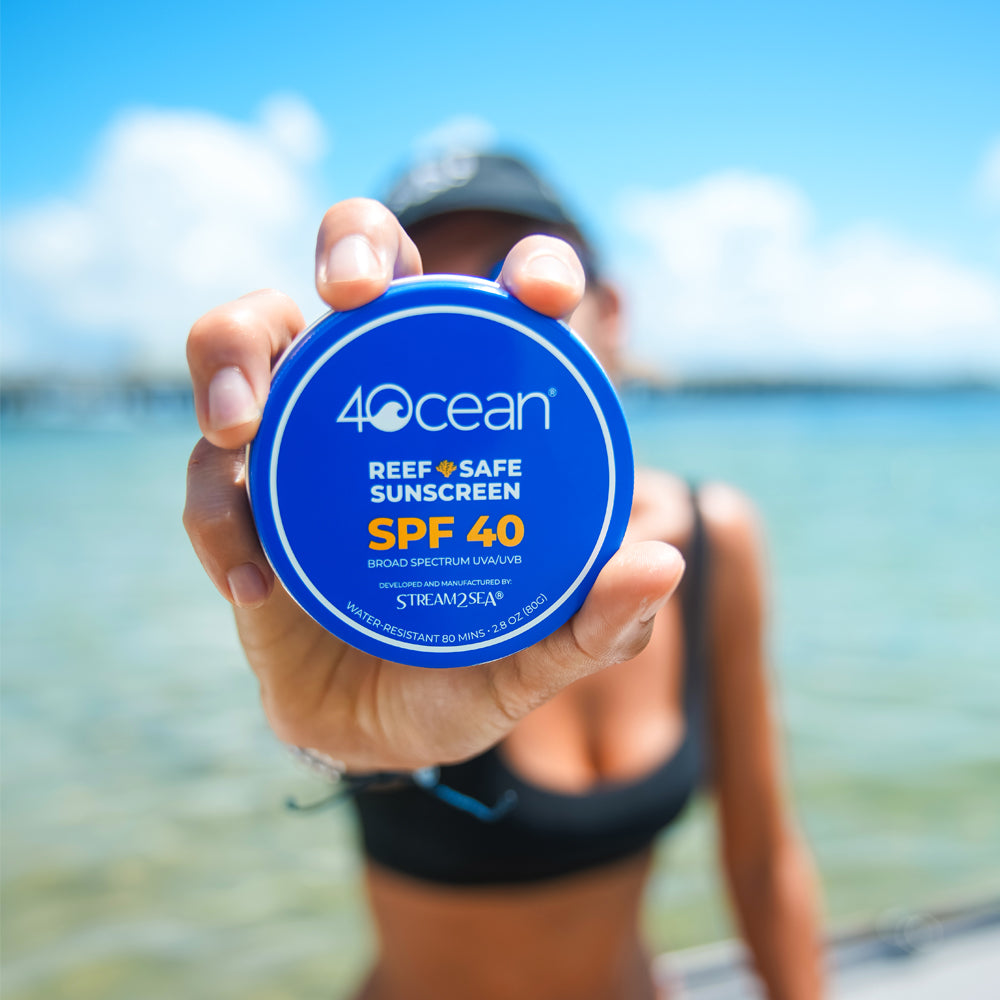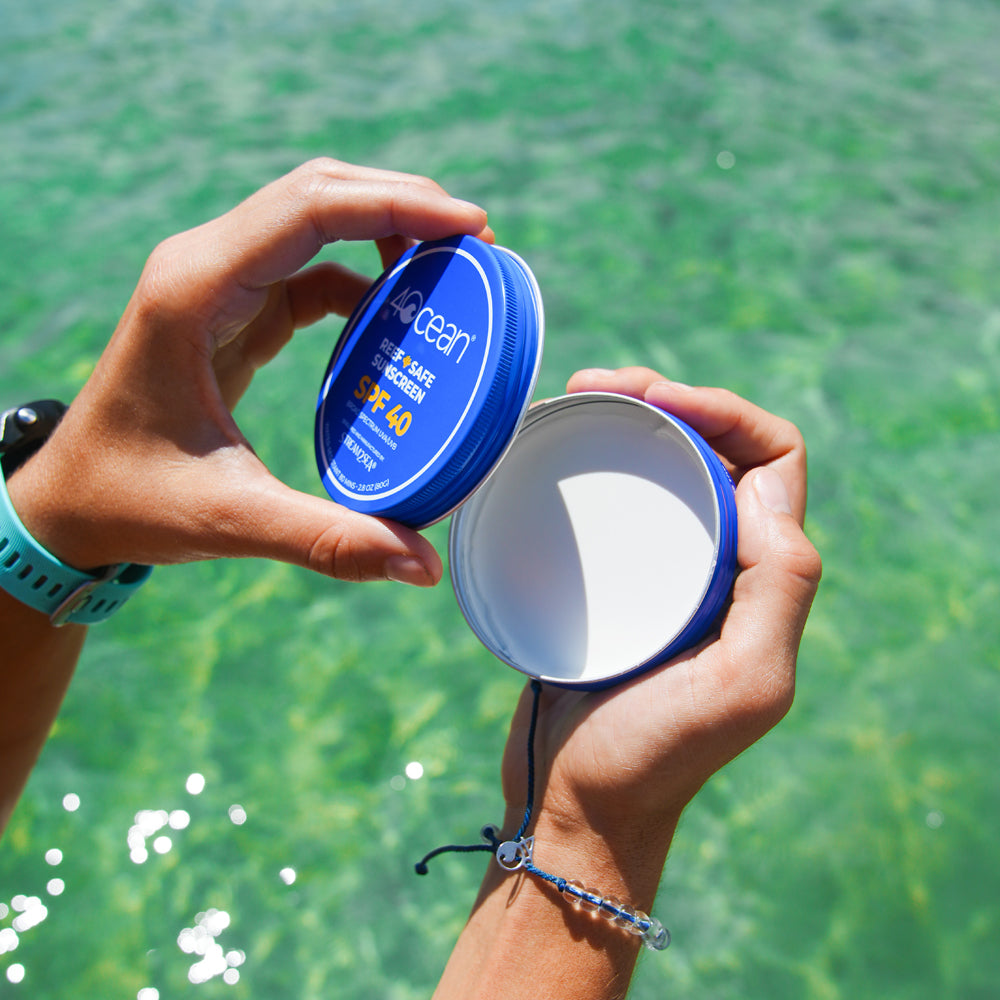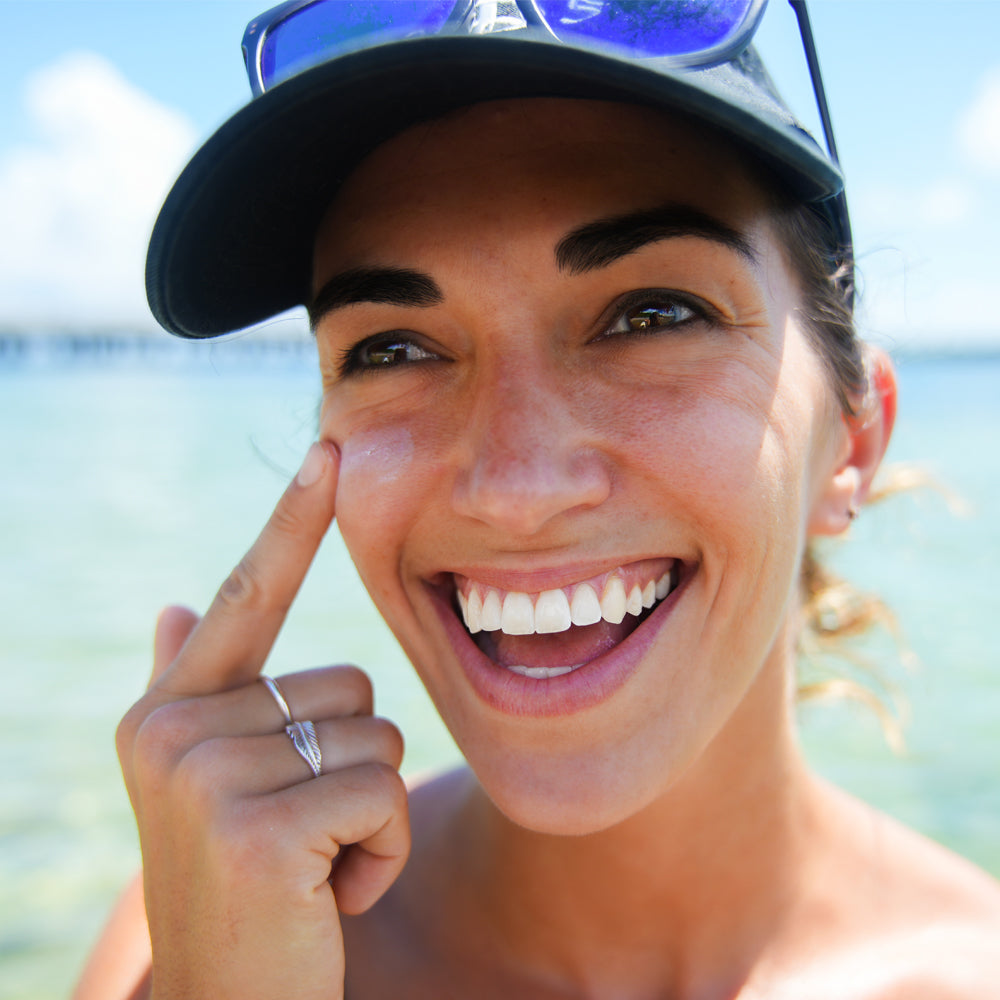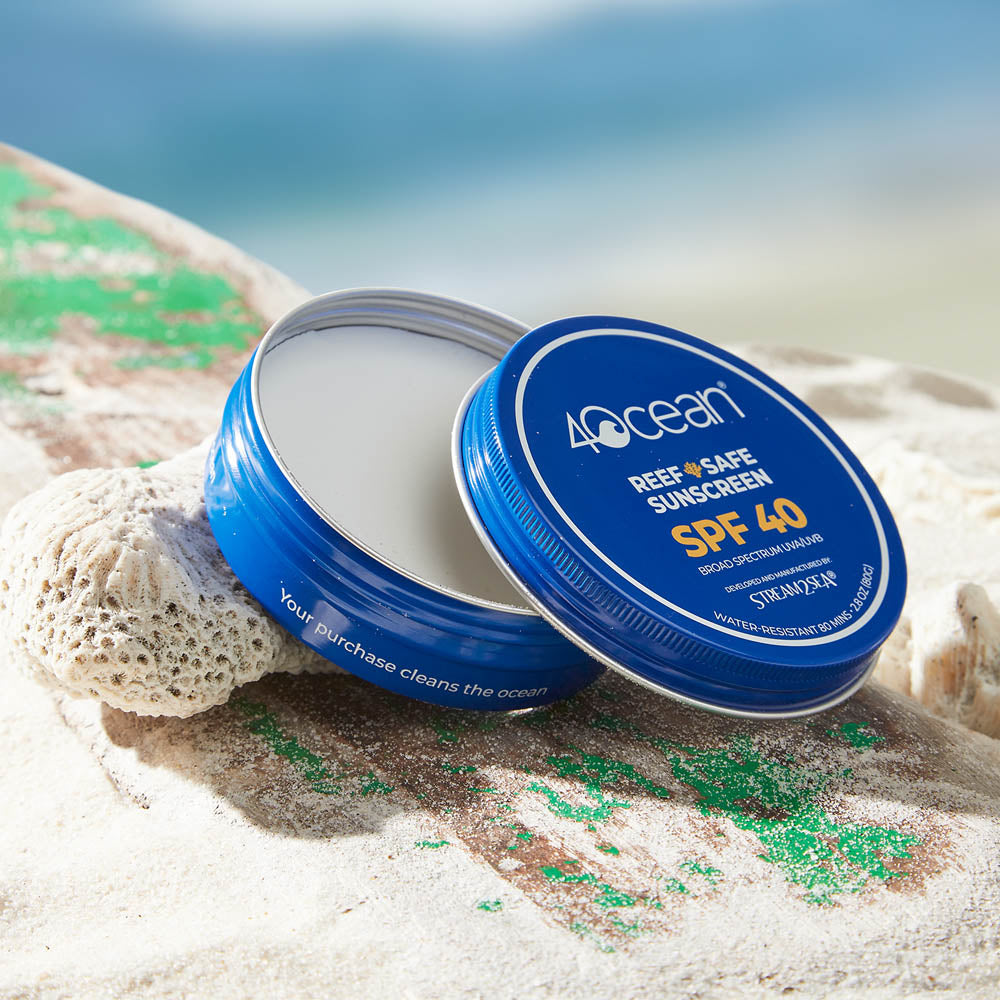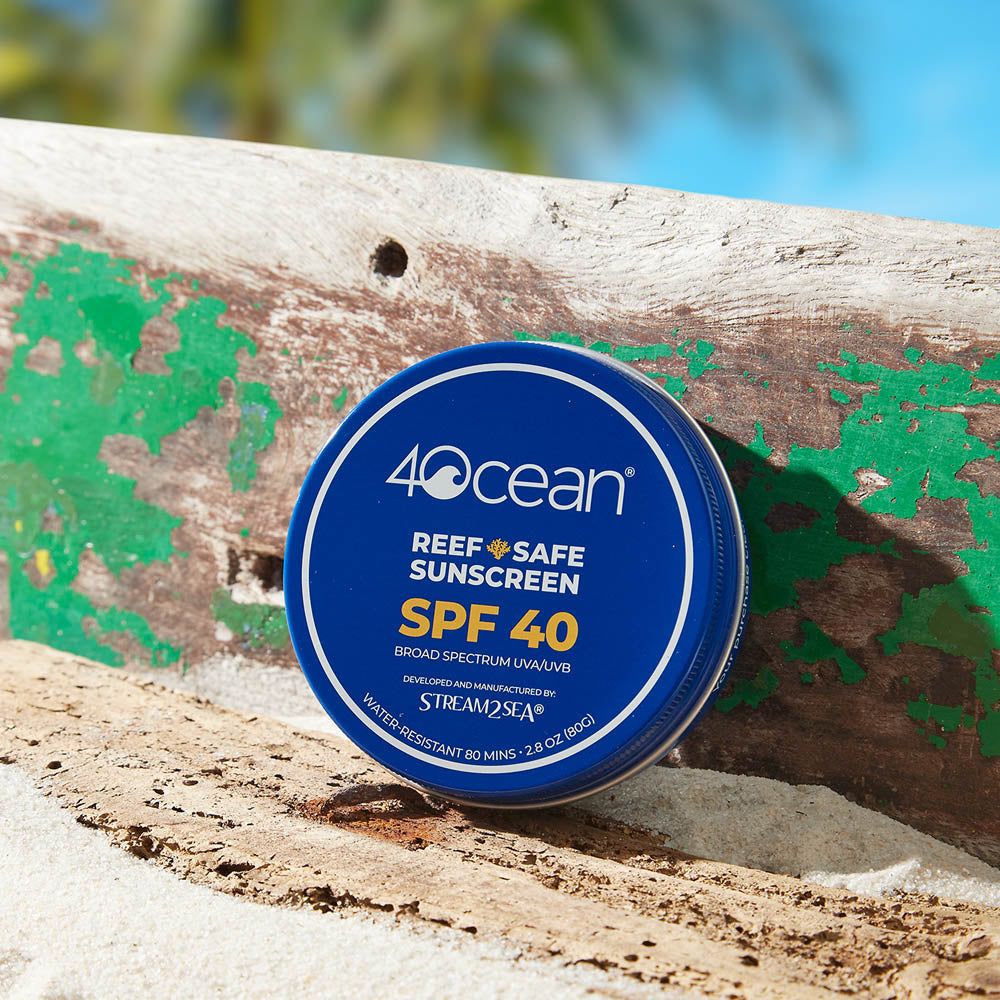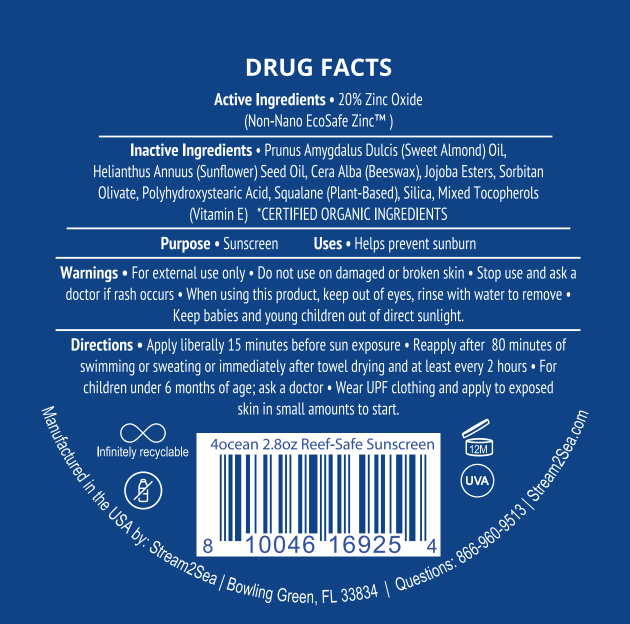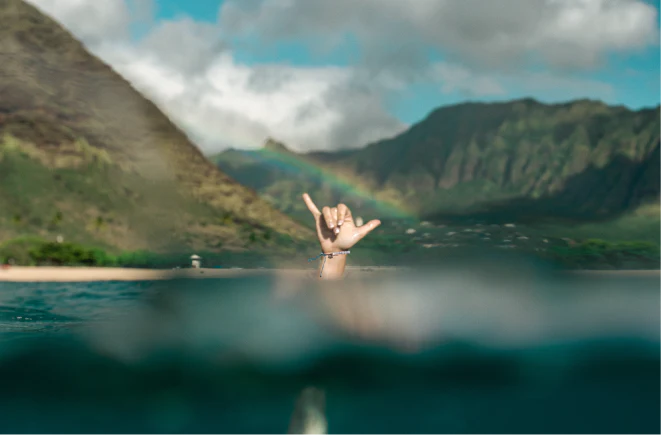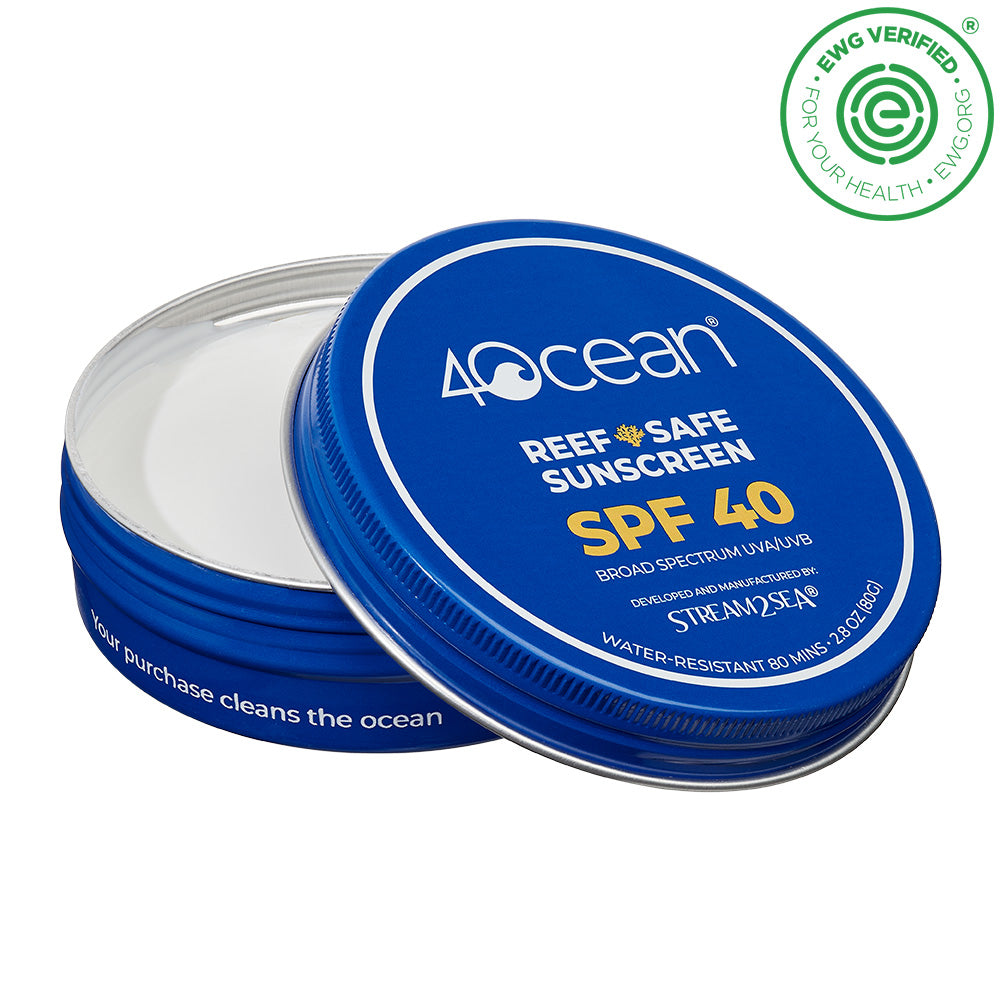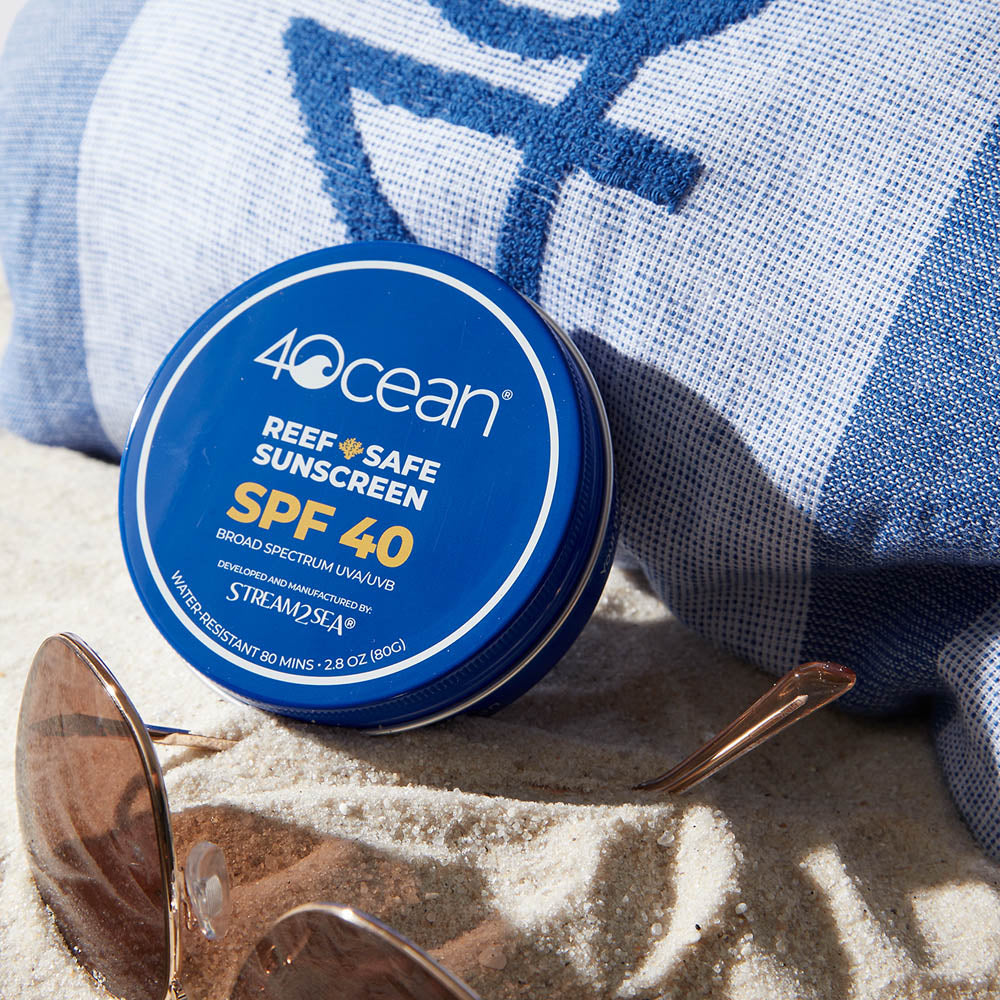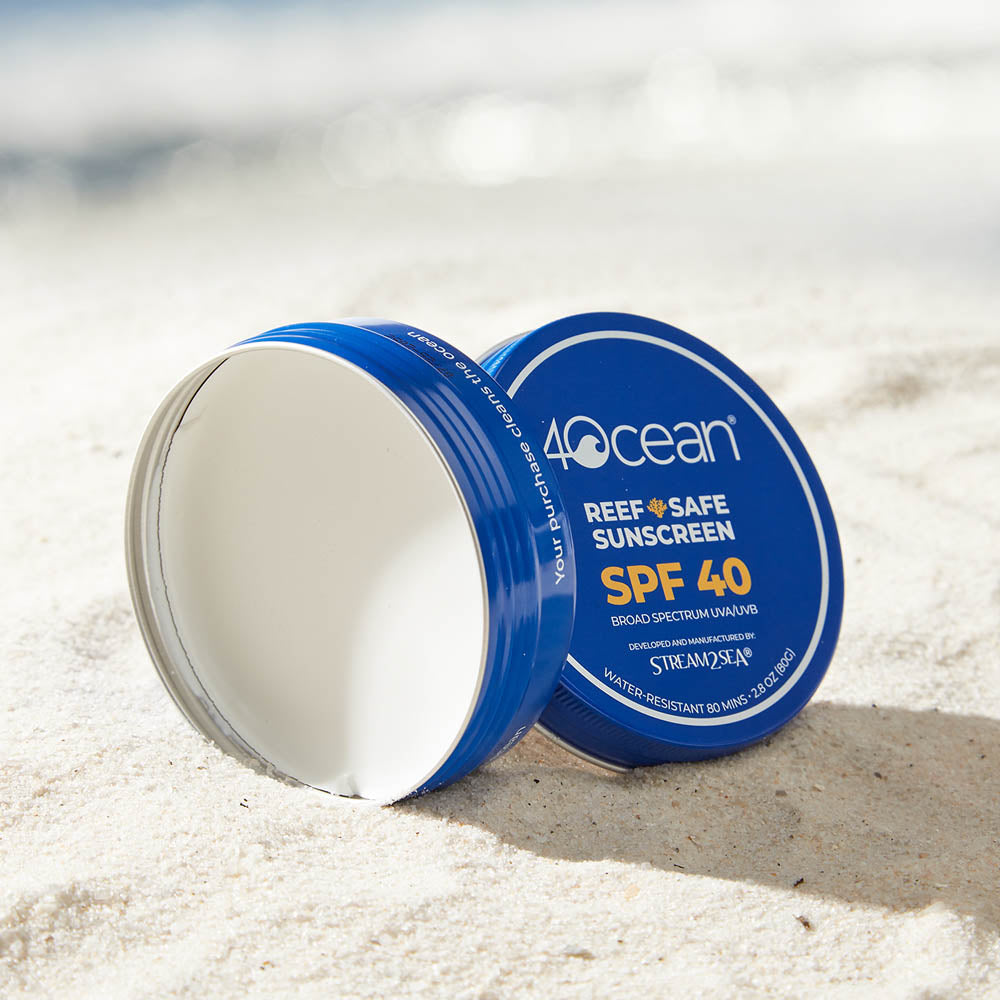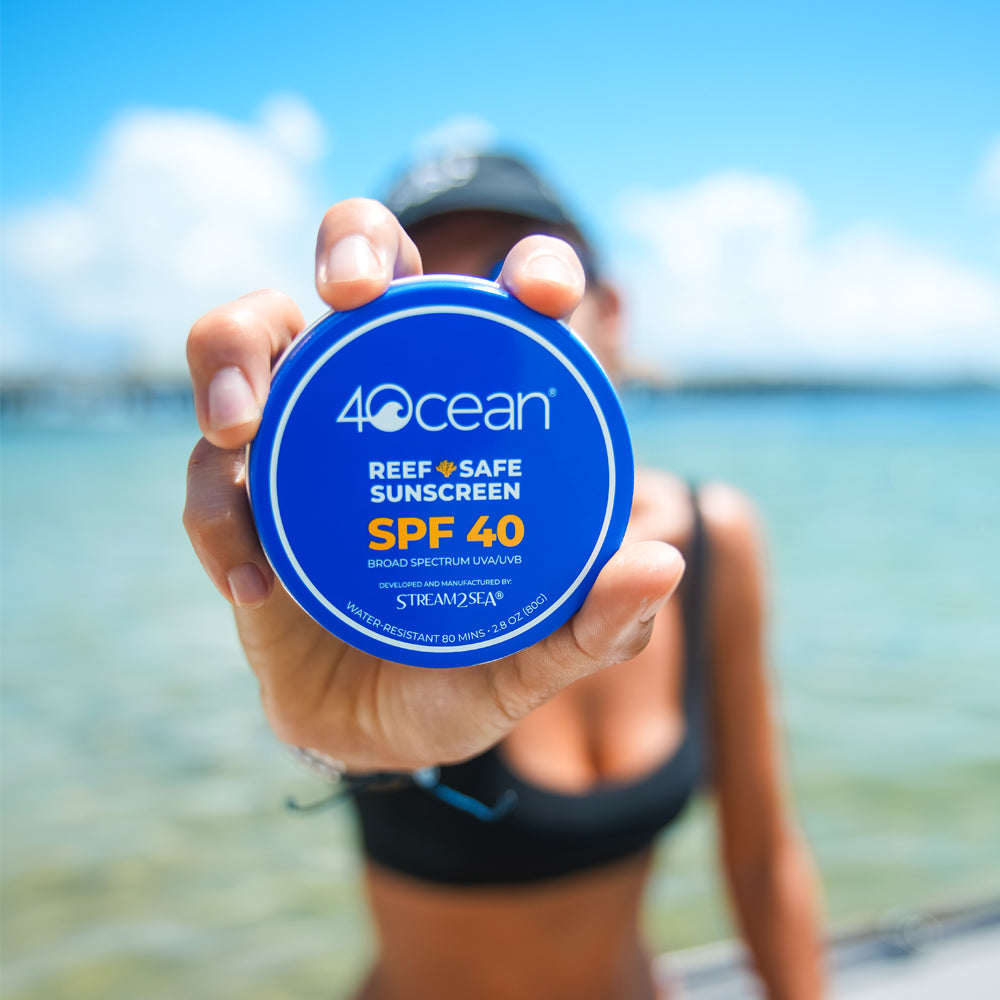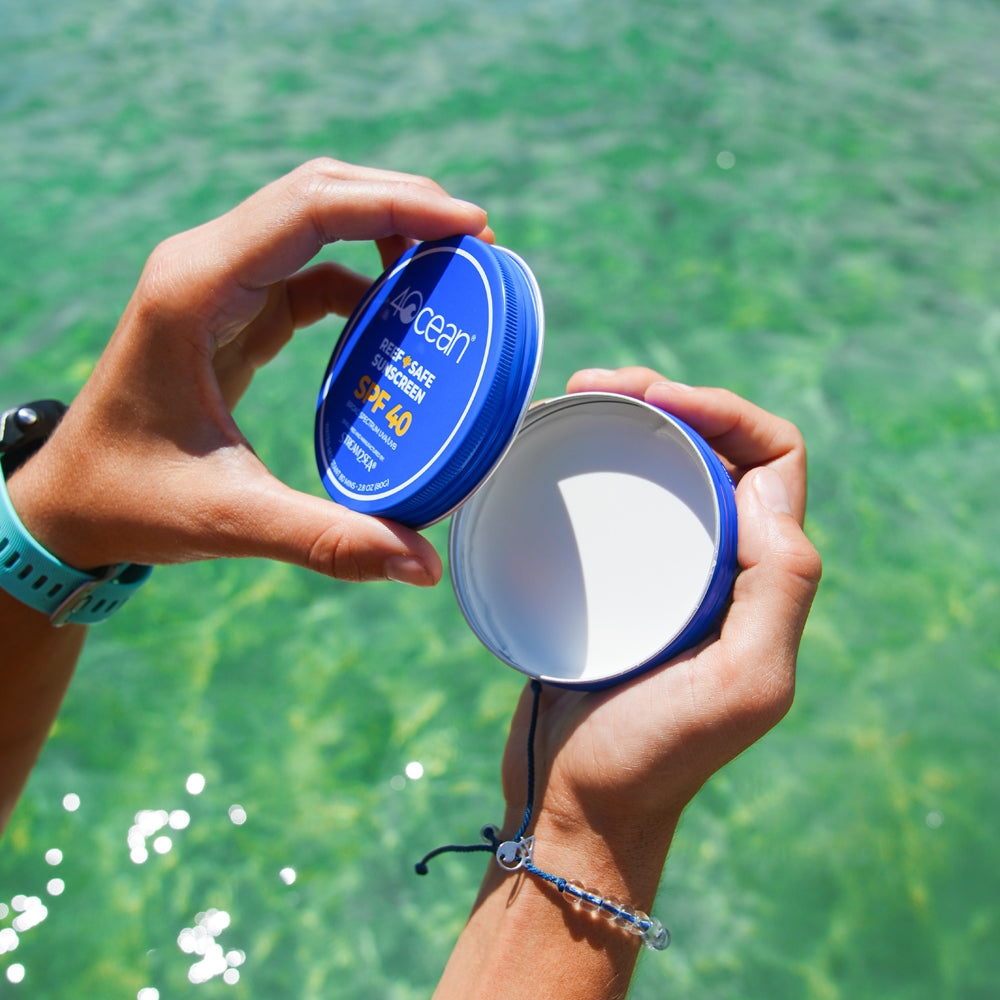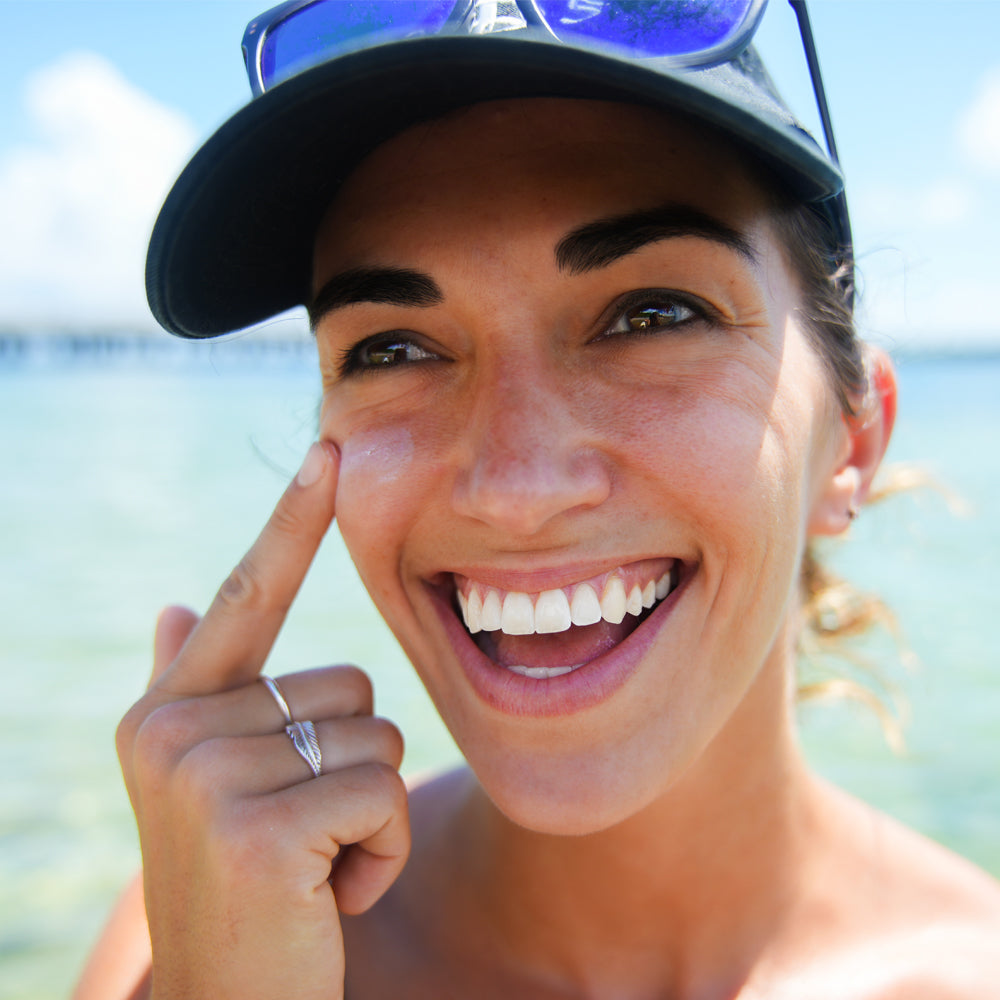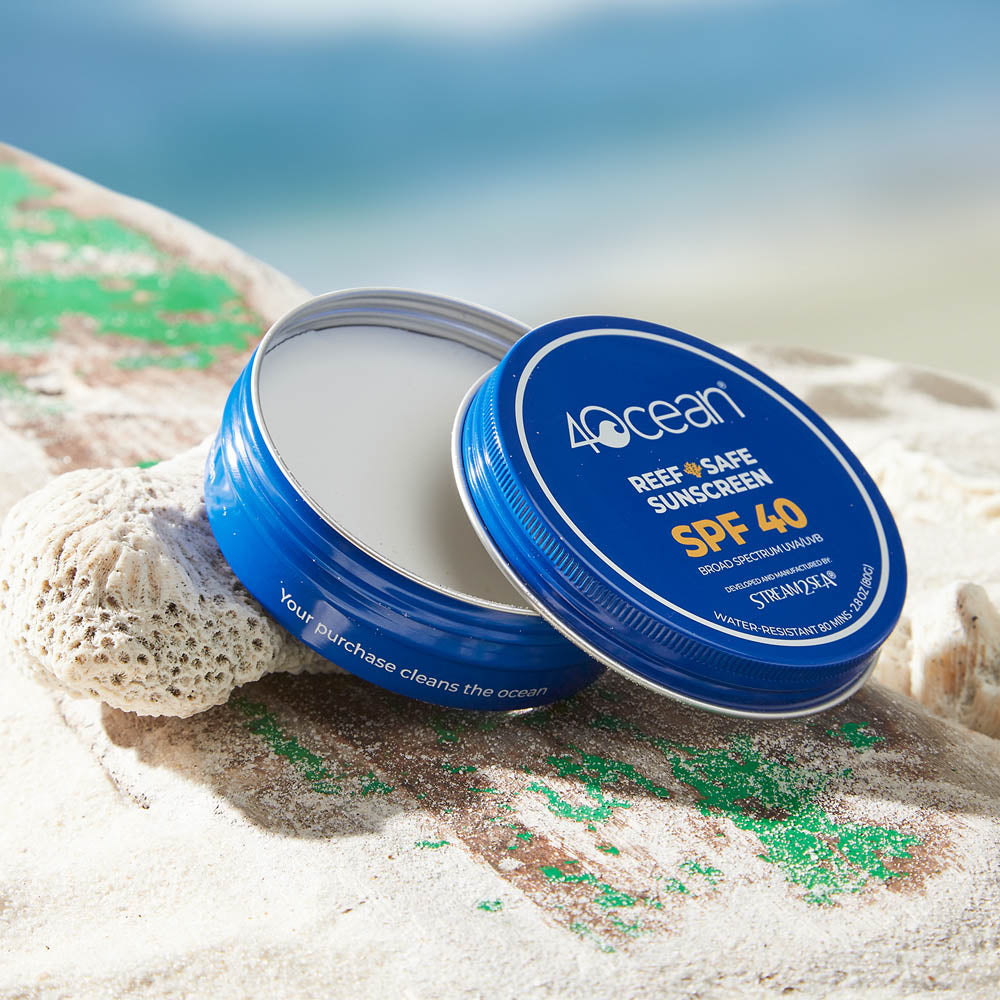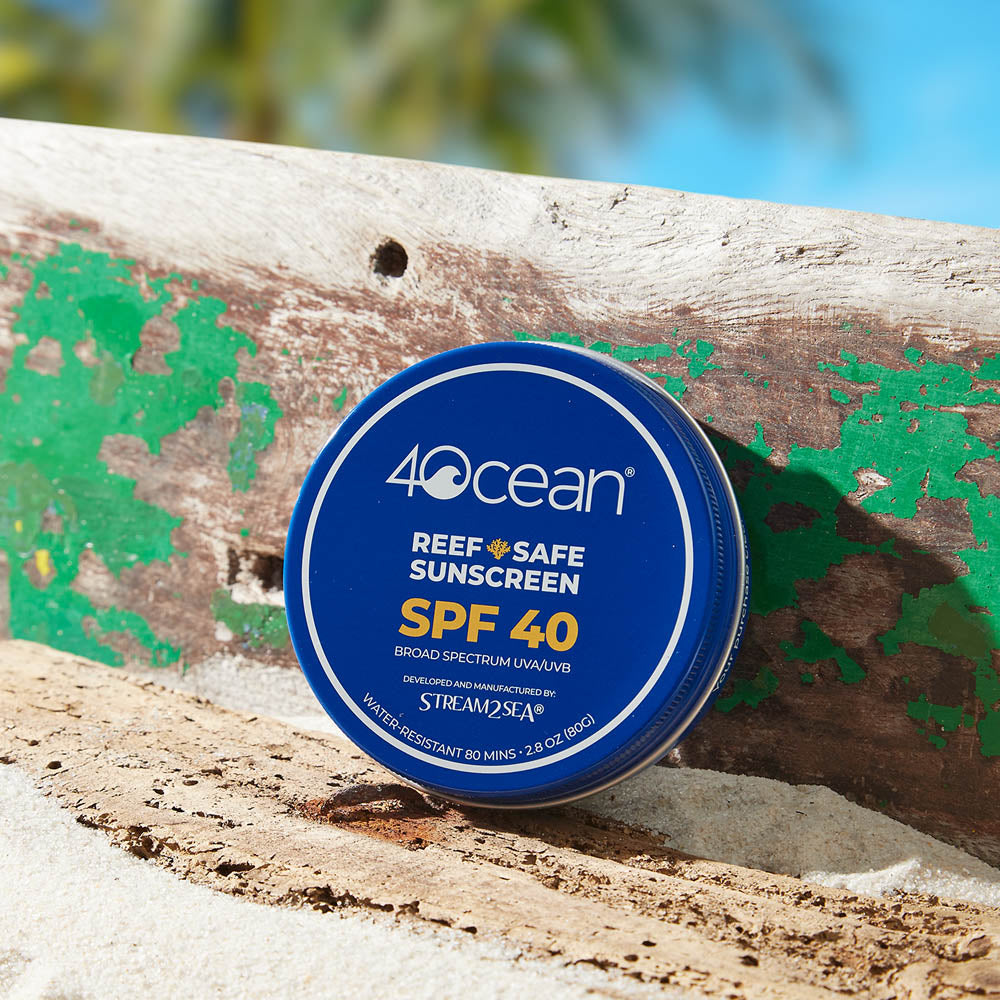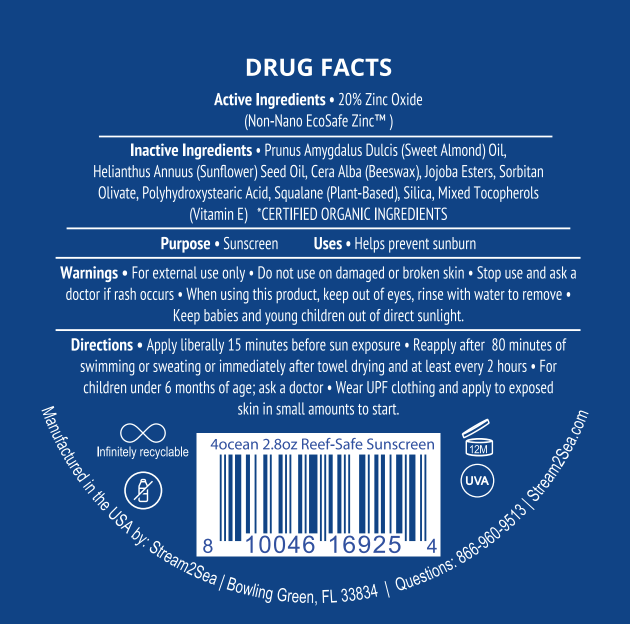
4ocean x Stream2Sea Reef-Safe Sunscreen Balm
4ocean x Stream2Sea Reef-Safe Sunscreen Balm is backordered and will ship as soon as it is back in stock.
Care information
Care information
Care: Your 4ocean bracelet is fully waterproof and coated with a protective layer of beeswax, making it safe to wear in the shower or the ocean. For best care, rinse it with fresh water after saltwater exposure.
Delivery and Shipping
Delivery and Shipping
Don't worry about your impact! Your shipping will be delivered with carbon neutral and plastic-free shipping. Expect your order to ship out within 2 business days.
Description
Description
Description
Already a favorite among divers, ocean conservationists, and the 4ocean crew, this powerfully effective formula is non-greasy, applies sheer, won’t burn your eyes, and is water resistant up to 80 minutes.
Made and packaged right here in Florida, our reef-safe sunscreen comes in an infinitely reusable and recyclable aluminum tin for sun protection that’s good for you, our coral reefs, and our planet.
Payment & Security
Payment methods
Your payment information is processed securely. We do not store credit card details nor have access to your credit card information.
Collections
Stories from the Field
View allWe know it's the "BALM"...
Don't Take Our Word for It.
Formulated with 100% safe ingredients
We're so proud of our ingedients, we want to show you what they look like so you know exactly what's going on your body.
Stream2Sea is the ONLY sunscreen that’s scientifically formulated to be safe for fish and coral larvae!
TEST RESULTS
Swimming behavior of fish at 3, 6, 24, 48, 72, and 96 hours of exposure

STREAM2SEA

COMPETITOR
“As a diver and Florida native, I have personally witnessed the decline of our reefs over the last 25 years. The scariest part is that decline is accelerating at a crazy pace. I do not believe that toxic sunscreens are the largest contributor to reef decline, but they absolutely DO contribute and it is such an easy problem to eliminate.
Our reefs need every chance they can get to survive, and if we can easily eliminate one of the stressors, I believe it is our duty to do so.”
Autumn Blum
Founder + Formulator
Stream2Sea
Wear it everywhere you need sun protection
Did you know that modern wastewater treatments don’t remove oxybenzone or other harmful chemical ingredients from water before it’s discharged?
That’s why the sunscreen you choose matters whether you live 10 minutes from the beach or 10,000 miles.
We believe ALL water deserves to be protected, so our sunscreen has been tested for biodegradability, aquatic toxicity, and coral reef safety in both fresh and saltwater environments.



